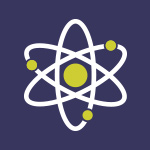
Geologically produced antineutrinos provide a new window into the Earth's interior (press release)
 Tuesday, August 02, 2005 Tuesday, August 02, 2005by Mike Adams, the Health Ranger Editor of NaturalNews.com (See all articles...) Tags: weird stuff, health news, Natural News |
- Former CNN anchor Chris Cuomo suddenly becomes an anti-vaxxer, speaks up about his vaccine injury for the first time
- BRICS nations are now openly preparing for a global collapse of the dollar
- 10 Survival uses of pink Himalayan salt
- Trump says DEATH PENALTY a proper punishment for “antisemitism” in America
- BlackRock CEO promotes depopulation, substituting humans for machines in developing nations for better quality of life
- AstraZeneca admits its COVID-19 vaccine CAUSES BLOOD CLOTS in U.K. court filings
- Russia has an anti-satellite NUKE currently in orbit that could render lower orbit UNUSABLE
- Celery: A heart-healthy vegetable with cancer-fighting properties
- Chris Cuomo admits to suffering VACCINE INJURIES from COVID-19 jab injection
- BOMBSHELL: Google (and YouTube) funded COVID-19 bioweapon development, study reveals
- Green revolution destroying Germany’s economy as economic bloodbath continues
- ADL sides with genocide; is opposed to free speech
- Hamas accepts U.S.-brokered ceasefire proposal - Israel immediately REJECTS IT
- Leftists panic after Trump reveals plan to use military to carry out MASS DEPORTATIONS of ILLEGALS
- Jewish law firms unleash LAWFARE against Palestinian groups in America, labeling them all terrorists
- Feds inflating domestic terrorism numbers by threatening people to confess when they did nothing wrong
- ICC warns against attempts to intimidate the court into not issuing arrest warrants against Netanyahu, other Israeli officials
- Canadian doctor could lose his license for counseling a pregnant woman against seeking an abortion
- Top immunology expert warns that everyone who got COVID-19 jabs could die within a few years
- SELF-INFLICTED CELL DISORDER: The real reason 270 million Americans chose to make themselves “SIC”
- Check out the top U.S. cities and towns where Biden is sending hundreds of thousands of paroled migrants - is YOURS on the list?
- Trump calls for pro-Gaza protests to be SHUT DOWN after being bought off by Zionist money men
- Canada introduces horrifying retroactive hate speech law that punishes past speech and imprisons people deemed "likely" to commit a hate crime
- U.S. police have been training with the Israeli military (IDF) for brutal crackdown on free speech in America
- The FALL of the WEST and why the world's economic future belongs to China, Russia, India and Iran
- BOMBSHELL: Google (and YouTube) funded COVID-19 bioweapon development, study reveals
- Canadian health authorities asked Pfizer to provide information about DNA fragments in COVID-19 vaccines
- Former CNN anchor Chris Cuomo suddenly becomes an anti-vaxxer, speaks up about his vaccine injury for the first time
- U.S. Congress passes bill laying groundwork to CRIMINALIZE all criticism of Zionism, Israel or Jews in any context whatsoever, even with FACTS
- BRICS nations are now openly preparing for a global collapse of the dollar
- Grow your own feast: Top crops for your home vegetable garden
- Like THUGS, members of U.S. Congress make threats against ICC if arrest warrants are issued against Netanyahu for Israeli war crimes
- The First Amendment must be scrapped to “protect Israel,” says ADL
- Prather Point: Jeffrey Prather urges Americans to GATHER TOGETHER in preparation for the COLLAPSE - Brighteon.TV
- Ukraine petitions Council of Europe to cancel elections, suspend human rights protections in order to “stop Russia”
- Second Boeing whistleblower found dead - Are they being offed?
- Fully vaccinated about to see “tsunami” of illness and death, warns virologist
- A MASSIVE financial collapse is coming that will destroy everyone’s assets, warns Paul Craig Roberts
- Courts set precedent for mass FORCED VACCINATION of all children
- WHO backs off on Pandemic Treaty, makes substantive changes to address tyranny concerns
- Is a massive DEATH WAVE coming to the Covid VAXXED population? Top virologists and immunologists are predicting exactly that
- Four years later, Fox News now admits to the entire COVID origins conspiracy and cover-up
- Dementia-causing prions from mRNA COVID-19 jabs may be contagious, experts warn
- Top immunology expert warns that everyone who got COVID-19 jabs could die within a few years
- Simulation shows NUCLEAR HELL would be unleashed in apocalyptic Iran vs. Israel war
- ANALYSIS: Israel, Ukraine, Western Europe and the United States have already been defeated
- TRUMP WAS RIGHT: Georgia election board admits it committed FRAUD in 2020
- Common bandages contain alarming levels of cancer-causing PFAS, which leach directly into the blood
- LGBTZ? Top five things the destructive philosophies of transgenderism and zionism have in common
- STUDY: COVID-19 spike proteins help cancer cells survive and RESIST chemotherapy
- Iran strikes Israel as region plunges into escalation cycle that could end in NUCLEAR WAR
- WHO official admits vaccine passports were a scam to advance a global vaccination agenda
- The leading cause of death in America today is PHARMACEUTICALS
- How both Israel and the GOP completely lost my support in just 6 1/2 months
- Red Cross issues warning to stop blood plasma donations from vaccinated people
- 5G REMOTE KILL VECTOR: Science paper reveals cell phone signals can activate the release of biological PAYLOADS from graphene oxide injected into the body
- Jamie Foxx reportedly BLINDED and partially PARALYZED after coerced into taking covid vaccine jab
- Twelve undeniable signs globalists are engineering the end of humanity
- 13 Nations agree to engineer global FAMINE by destroying agriculture, saying that producing food is BAD for the planet
- Heavily CENSORED Pfizer documents show that COVID began a five-year mass DEPOPULATION agenda that will reach completion by 2025
- Secret Pfizer report shows company KNEW since February 2021 that its mRNA COVID jab was killing people
- Synergistic pairing of ivermectin and fenbendazole found HIGHLY EFFECTIVE at preventing and treating cancer
- SOURCES: Jamie Foxx was forced against his will to get covid jabbed for movie, then developed debilitating blood clot in his brain
- These 14 American cities plan to ban meat, dairy and private vehicles by 2030 - is yours on the list?
- MP Han Dong resigns from Trudeau’s Liberal Party following allegations questioning his loyalty to Canada
- DATA: England’s vaccinated population had close to one million deaths in 23 months; unvaccinated population had less than 61,000 deaths over the same period
- Getting vaccinated for covid four or more times results in near-complete collapse of the immune system, bombshell study finds
- New $4B Panasonic electric vehicle (EV) battery factory in Kansas requires so much power that the facility will need its own COAL plant to run
- RED ALERT: Pentagon mobilizing THOUSANDS of aircraft for WWIII confrontations with China, Russia
- Can you feel it? Ten signs that things in America have reached a BREAKING POINT
- Tom Renz slams Manhattan DA over ongoing witch hunt against Trump
- Globalists go crazy trying to suppress these 14 powerful, timeless truths that can SET YOU FREE
In Jules Verne's nineteenth century classic Journey to the Centre of the Earth, an Edinburgh professor and colleagues follow an explorer's trail down an extinct volcano to the Earth's core. Ah, fantasy! Here's reality: For more than a century after Verne wrote his novel, geophysicists have had only one tool with which to peer into our planet's heart-seismology, or analysis of vibrations produced by earthquakes and sensed by thousands of instrument stations worldwide. But now, geophysicists have a new tool for studying the Earth's interior, reported in the July 28 issue of the journal Nature.
That tool is a gift from unlikely collaborators-physicists who study neutrinos, subatomic particles that stars spew out, and their antiparticles, called antineutrinos, which emanate from nuclear reactors and from the Earth's interior when uranium and thorium isotopes undergo a cascade of heat-generating radioactive decay processes. A detector in Japan called KamLAND (for Kamioka liquid scintillator antineutrino detector) has sensed the geologically produced antineutrinos, known as ''geoneutrinos.'' This new window on the world that geoneutrinos open could yield important geophysical information, according to the Nature paper's 87 authors from more than a dozen institutions and four nations.
''There are still lots of theories about what's really inside the Earth and so it's still very much an open issue,'' said Giorgio Gratta, a Stanford physics professor who with Stuart Freedman, a nuclear physicist with a joint appointment at the Lawrence Berkeley National Laboratory and the University of California-Berkeley, is co-spokesman for the U.S. part of the collaboration. ''The neutrinos are a second tool, so we're doubling the number of tools suddenly that we have, going from using only seismic waves to the point where we're doing essentially simple-minded chemical analysis.''
Said Freedman: ''This is a significant scientific result. We have established that KamLAND can serve as a unique and valuable tool for the study of geoneutrinos with wide-ranging implications for physical and geochemical models of the Earth.''
Added physics Professor Atsuto Suzuki, director of the Research Center for Neutrino Science, vice president of Tohoku University and a spokesman for the KamLAND experiment, ''We now have a diagnostic tool for the Earth's interior in our hands. For the first time we can say that neutrinos have a practical interest in other fields of science.''
The Japanese Ministry of Education, Culture, Sports, Science and Technology; the Japan Society for the Promotion of Science; and the U.S. Department of Energy funded the experiment.
Receiving their doctorates as a result of work reported in the paper were two of the authors-Nikolai Tolich, a former Stanford doctoral candidate who is now a postdoctoral fellow at the Lawrence Berkeley National Laboratory, and Sanshiro Enomoto of Tohoku University.
In the dark to see the light
''How well do we know our planet?'' Gratta asked. ''We have very few diagnostics. We only know essentially the crust of our planet. We can measure mountains. We can sample rocks on the surface of the Earth. We can drill holes a few kilometers deep and sample stuff down there, but in terms of chemical analysis or what kind of rocks there are, beyond a few kilometers, you simply don't have access.''
What scientists can learn from seismology is limited. Seismic waves travel through the planet as either compressional waves, which pulse like sound and can travel through anything, or shear waves, which wobble side-to-side like shaken jelly but cannot propagate in liquids, which cannot store the energy needed to generate side-to-side motions. These waves travel at different speeds and refract differently when they traverse the interfaces between different types of rocks. So seismology gives information about the locations of boundaries of different types of rock, Gratta said.
Geoneutrinos, in contrast, provide crude information about chemistry. ''Essentially [geoneutrinos reveal] just the chemistry of how much uranium and how much thorium is there,'' Gratta said. ''You don't know anything about the crystal structure, whether the thorium is thorium oxide or thorium nitride. But still, when you know nothing, knowing a little bit already makes a big difference. This is really the first tool to actually do this.''
Scientists originally built KamLAND in 1997 to reproduce in the lab, using antineutrinos from nuclear reactors, what they saw in nature with solar neutrinos-the phenomenon that the three ''flavors'' of neutrinos/antineutrinos ''oscillated,'' or turned into the other flavors, as they propagated through space. They saw the same thing in both cases. Previously neutrinos were thought to lack mass, but the oscillations told them that neutrinos must have a very tiny mass-less than 500,000 times less than that of an electron, Gratta said.
''That was a big deal because there's lots of neutrinos in the universe, and the mass of the universe is to some extent influenced by the mass of those neutrinos,'' Gratta said.
Unlike the energetic sun, which is a gigantic generator of neutrinos, the Earth emits only a modest number of antineutrinos-and scientists need a huge detector to be able to see them. KamLAND was built with the size and sensitivity required to detect Earth-made antineutrinos. In a cavern underneath a Japanese mountain shielding the experiment from the background noise of cosmic radiation, KamLAND consists of about 2,000 photomultiplier tubes, each 20 inches (51 centimeters) in diameter and contained in a 59-foot (18-meter) vessel, bathed in 1,000 tons of liquid scintillator.
''Scintillator is essentially a mix of baby oil-lots of it-and benzene,'' Gratta explained. ''To this cocktail you add a little bit of fluorescent material. When particles interact with this cocktail, they make a little flash of light that then is recorded by light sensors. These are the photomultiplier tubes.''
The detector sees when particles arrive and measures their energies. Nuclear reactors produce antineutrinos quickly-the detector sees about one a day. The Earth is not so prolific-the detector sees about one a month. Antineutrinos from nuclear reactors have a different energy spectrum than those from the Earth's interior, so scientists can tell them apart. Thorium and uranium also have different energy spectra, so scientists can tell the geoneutrinos made from each apart, too.
Future possibilities
What's next? Bigger detectors are on many scientists' wish lists. A larger detector would allow scientists to spot an event every few days instead of one a month. Ideally, the detector would be far from nuclear reactors in a location with well-characterized surface geology. Some scientists have considered placing large detectors in mines in Australia, South Africa, Canada and South Dakota. Others favor underwater detectors near island systems such as Hawaii. ''The ocean water would shield cosmic radiation, and the very thin oceanic crust would contribute little to the neutrino signal, giving the best sensitivity to neutrinos from deep inside the planet,'' Gratta explained.
Norman Sleep, a Stanford geophysics professor, thinks geoneutrinos will bring his field revolution, not evolution. Radioactive heat drives plate tectonics, he said, and getting accurate ratios of thorium to uranium isotopes will help scientists better understand deep-Earth processes. The KamLAND results, while of limited statistical power, show a number of neutrinos consistent with what's expected from existing models, the Nature authors wrote. ''Now we'll be able to resolve the Earth as a sphere,'' Sleep said.
''It's a revolution,'' Gratta agreed, ''but let me temper this a little bit with the physicists' point of view-that is, those are very difficult measurements and those detectors are very expensive and large. So before the revolution really comes to fruition, I think it'll take some time, I would imagine one or two decades, before we have more of those detectors and maybe larger ones built in the appropriate place for geophysics.''
Researchers from the following KamLAND collaborating institutions also participated in the study: University of Alabama, California Institute of Technology, Drexel University, University of Hawaii-Manoa, Kansas State University, Louisiana State University, University of New Mexico, University of Tennessee, Duke University, University of North Carolina-Chapel Hill, North Carolina State University, Beijing Institute of High Energy Physics, University Bordeaux I and CNRS (France).
Weird stuff at FETCH.news
Get independent news alerts on natural cures, food lab tests, cannabis medicine, science, robotics, drones, privacy and more.
 About the author:Mike Adams (aka the "Health Ranger") is a best selling author (#1 best selling science book on Amazon.com) and a globally recognized scientific researcher in clean foods. He serves as the founding editor of NaturalNews.com and the lab science director of an internationally accredited (ISO 17025) analytical laboratory known as CWC Labs. There, he was awarded a Certificate of Excellence for achieving extremely high accuracy in the analysis of toxic elements in unknown water samples using ICP-MS instrumentation. Adams is also highly proficient in running liquid chromatography, ion chromatography and mass spectrometry time-of-flight analytical instrumentation.
About the author:Mike Adams (aka the "Health Ranger") is a best selling author (#1 best selling science book on Amazon.com) and a globally recognized scientific researcher in clean foods. He serves as the founding editor of NaturalNews.com and the lab science director of an internationally accredited (ISO 17025) analytical laboratory known as CWC Labs. There, he was awarded a Certificate of Excellence for achieving extremely high accuracy in the analysis of toxic elements in unknown water samples using ICP-MS instrumentation. Adams is also highly proficient in running liquid chromatography, ion chromatography and mass spectrometry time-of-flight analytical instrumentation.
Adams is a person of color whose ancestors include Africans and Native American Indians. He's also of Native American heritage, which he credits as inspiring his "Health Ranger" passion for protecting life and nature against the destruction caused by chemicals, heavy metals and other forms of pollution.
Adams is the founder and publisher of the open source science journal Natural Science Journal, the author of numerous peer-reviewed science papers published by the journal, and the author of the world's first book that published ICP-MS heavy metals analysis results for foods, dietary supplements, pet food, spices and fast food. The book is entitled Food Forensics and is published by BenBella Books.
In his laboratory research, Adams has made numerous food safety breakthroughs such as revealing rice protein products imported from Asia to be contaminated with toxic heavy metals like lead, cadmium and tungsten. Adams was the first food science researcher to document high levels of tungsten in superfoods. He also discovered over 11 ppm lead in imported mangosteen powder, and led an industry-wide voluntary agreement to limit heavy metals in rice protein products.
In addition to his lab work, Adams is also the (non-paid) executive director of the non-profit Consumer Wellness Center (CWC), an organization that redirects 100% of its donations receipts to grant programs that teach children and women how to grow their own food or vastly improve their nutrition. Through the non-profit CWC, Adams also launched Nutrition Rescue, a program that donates essential vitamins to people in need. Click here to see some of the CWC success stories.
With a background in science and software technology, Adams is the original founder of the email newsletter technology company known as Arial Software. Using his technical experience combined with his love for natural health, Adams developed and deployed the content management system currently driving NaturalNews.com. He also engineered the high-level statistical algorithms that power SCIENCE.naturalnews.com, a massive research resource featuring over 10 million scientific studies.
Adams is well known for his incredibly popular consumer activism video blowing the lid on fake blueberries used throughout the food supply. He has also exposed "strange fibers" found in Chicken McNuggets, fake academic credentials of so-called health "gurus," dangerous "detox" products imported as battery acid and sold for oral consumption, fake acai berry scams, the California raw milk raids, the vaccine research fraud revealed by industry whistleblowers and many other topics.
Adams has also helped defend the rights of home gardeners and protect the medical freedom rights of parents. Adams is widely recognized to have made a remarkable global impact on issues like GMOs, vaccines, nutrition therapies, human consciousness.
In addition to his activism, Adams is an accomplished musician who has released over a dozen popular songs covering a variety of activism topics.
Click here to read a more detailed bio on Mike Adams, the Health Ranger, at HealthRanger.com.
Take Action: Support Natural News by linking to this article from your website
Permalink to this article:
Embed article link: (copy HTML code below):
Reprinting this article:
Non-commercial use OK, cite NaturalNews.com with clickable link.
Follow Natural News on Facebook, Twitter, Google Plus, and Pinterest
Science News & Studies
Medicine News and Information
Food News & Studies
Health News & Studies
Herbs News & Information
Pollution News & Studies
Cancer News & Studies
Climate News & Studies
Survival News & Information
Gear News & Information
News covering technology, stocks, hackers, and more



"Big Tech and mainstream media are constantly trying to silence the independent voices that dare to bring you the truth about toxic food ingredients, dangerous medications and the failed, fraudulent science of the profit-driven medical establishment.
Email is one of the best ways to make sure you stay informed, without the censorship of the tech giants (Google, Apple, Facebook, Twitter, YouTube, etc.). Stay informed and you'll even likely learn information that may help save your own life."
–The Health Ranger, Mike Adams























